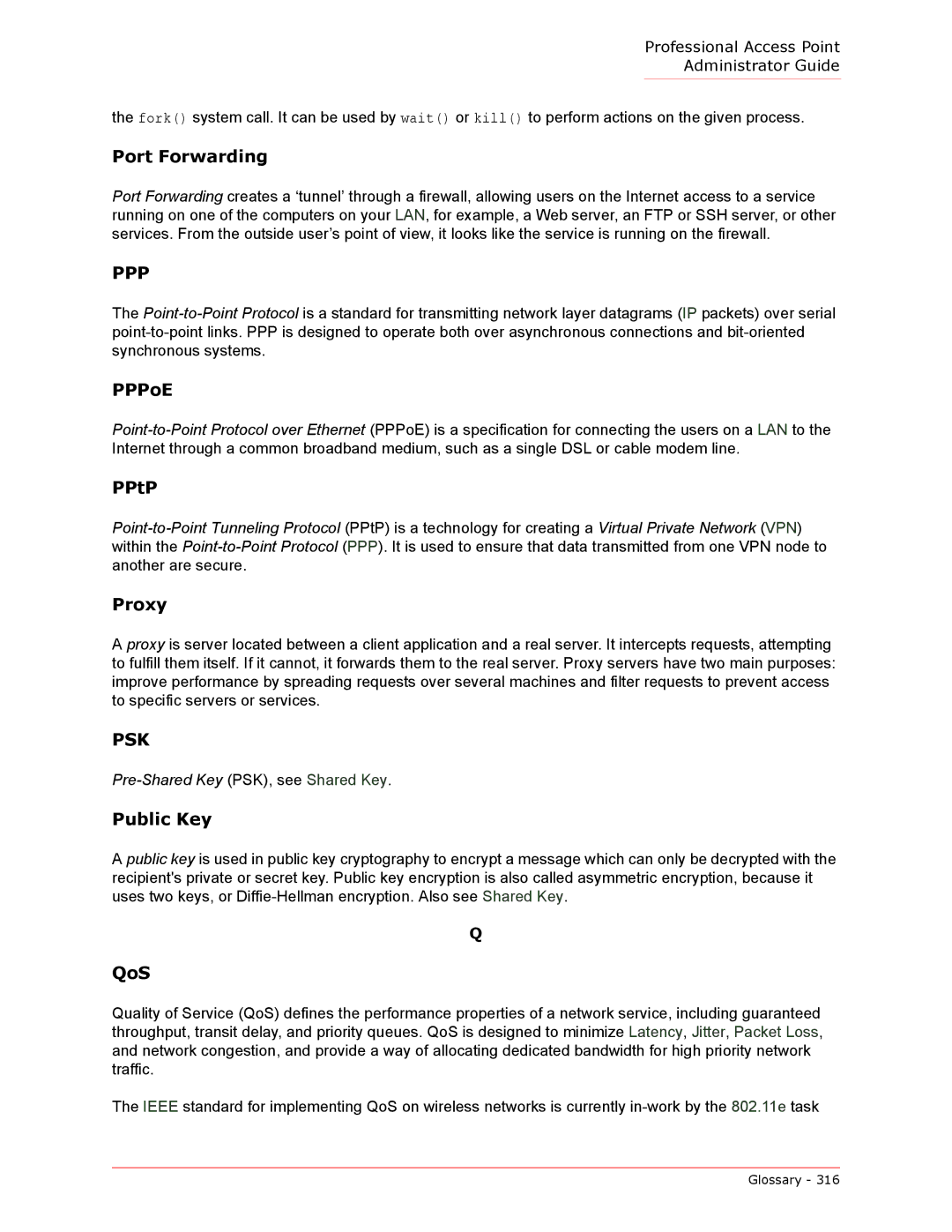
Professional Access Point
Administrator Guide
the fork() system call. It can be used by wait() or kill() to perform actions on the given process.
Port Forwarding
Port Forwarding creates a ‘tunnel’ through a firewall, allowing users on the Internet access to a service running on one of the computers on your LAN, for example, a Web server, an FTP or SSH server, or other services. From the outside user’s point of view, it looks like the service is running on the firewall.
PPP
The
PPPoE
PPtP
Proxy
A proxy is server located between a client application and a real server. It intercepts requests, attempting to fulfill them itself. If it cannot, it forwards them to the real server. Proxy servers have two main purposes: improve performance by spreading requests over several machines and filter requests to prevent access to specific servers or services.
PSK
Public Key
A public key is used in public key cryptography to encrypt a message which can only be decrypted with the recipient's private or secret key. Public key encryption is also called asymmetric encryption, because it uses two keys, or
Q
QoS
Quality of Service (QoS) defines the performance properties of a network service, including guaranteed throughput, transit delay, and priority queues. QoS is designed to minimize Latency, Jitter, Packet Loss, and network congestion, and provide a way of allocating dedicated bandwidth for high priority network traffic.
The IEEE standard for implementing QoS on wireless networks is currently
Glossary - 316
